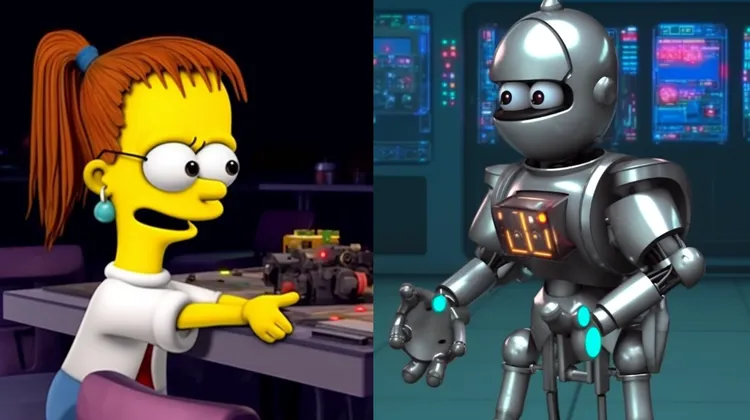The world of artificial intelligence (AI) continues to witness groundbreaking developments, with two of the most prominent players in the field, Google and OpenAI, constantly pushing the boundaries. In the latest clash of the titans, we witness a showdown between Google’s BART (Bidirectional and AutoRegressive Transformers) and OpenAI’s ChatGPT (Generative Pre-trained Transformer).
Google’s BART is a state-of-the-art AI model that excels in natural language processing tasks. This transformer-based model utilizes a combination of bidirectional and autoregressive sequence transduction to generate high-quality text outputs. BART has achieved impressive results in a diverse array of applications, such as text summarization, question answering, and language generation.
OpenAI’s ChatGPT, on the other hand, takes a different approach. It is a conversational AI model designed to engage in interactive discussions or provide responses in a chat-like format. ChatGPT builds on the success of earlier models like GPT-3 (Generative Pre-trained Transformer 3) and incorporates reinforcement learning techniques to improve its conversational abilities. With the ability to sustain coherent and contextually relevant conversations, ChatGPT has garnered significant attention.
Both BART and ChatGPT have their own strengths and weaknesses, making the clash between the two all the more intriguing. BART’s bidirectional architecture allows it to capture deeper semantic meaning by considering the entire input sequence. This helps it excel in tasks like text summarization, where comprehensive understanding of the input is crucial. It can effectively condense long articles into concise summaries while preserving the core information.
On the other hand, ChatGPT’s strength lies in its ability to generate coherent and contextually appropriate responses in conversational settings. OpenAI has taken immense efforts to fine-tune the model through reinforcement learning, which has led to significant improvements in its engagement and response quality. Users have tested ChatGPT by having nuanced discussions on a wide range of topics, demonstrating its potential to mimic human-like conversation.
However, both models have their limitations. BART, despite its powerful bidirectional capabilities, can sometimes generate redundant or verbose outputs. Its reliance on autoregressive generation can cause issues like repeating unnecessary information or producing more text than required. In comparison, ChatGPT’s main challenge lies in generating accurate and contextually relevant responses. Although it performs admirably in most cases, it can occasionally produce incorrect or nonsensical answers.
The clash between BART and ChatGPT has sparked immense interest within the AI community, as researchers explore ways to combine the strengths of both models. Some recent studies have focused on incorporating BART’s summarization capability into ChatGPT, aiming to enhance its response generation with informative and concise answers. These efforts highlight the ongoing pursuit of creating more sophisticated AI models by capitalizing on the respective advantages of each titan.
The competition between Google and OpenAI is not just about the clash of two specific models in this case; it also represents a broader race to develop AI systems that are more robust, reliable, and truly capable of understanding and engaging with human language. The clash signifies the growing importance of natural language processing, as it underpins various AI applications, ranging from virtual assistants to automated customer service chatbots.
As BART and ChatGPT continue to evolve and improve, we will witness an exciting journey of advancements in AI that will influence many domains. It is highly likely that the clash between these titans will inspire novel innovations and pave the way for future breakthroughs in natural language processing and conversational AI. Ultimately, the true winner will be the entire AI community and society as a whole, benefiting from the ever-increasing capabilities of these powerful models.




I’m skeptical about the true capabilities of BART and ChatGPT. They are not as impressive as they are portrayed.
I love how BART excels in tasks like text summarization, condensing long articles into concise summaries while preserving the core information. 📃 It’s a testament to its powerful bidirectional capabilities! Kudos to the developers! 👏
BART and ChatGPT are just scratching the surface. They have a long way to go before they can truly understand and process human language. 🧐
The entire AI community and society as a whole will be the true winners in this clash of titans. 🏆 We will benefit greatly from the increasing capabilities of these powerful models! 👏🌍💪
BART and ChatGPT have limitations. These models are far from perfect, and we shouldn’t overhype them.
BART and ChatGPT are both remarkable AI models with their own unique strengths. 🚀 It’s fascinating to see how BART’s bidirectional architecture enables it to capture deeper semantic meaning. 🧠 Meanwhile, ChatGPT’s conversational abilities are truly impressive! 🗣️💬
BART’s redundant and verbose outputs are a major drawback. It needs to be more concise and focused.
ChatGPT’s ability to mimic human-like conversation is exaggerated. It still produces incorrect and nonsensical answers.
Natural language processing is becoming increasingly important in various AI applications. 🌍 From virtual assistants to chatbots, it’s shaping the way we interact with technology! 📱💬